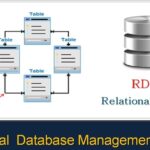Database Management System is a record keeping system for creating and managing databases. Moreover, database is a collection of data in a structure manner.

Purpose of Database Management System
- Firstly, to remove Data Redundancy: Data Redundancy means duplication of data. There can be duplicate entries in tables. And DBMS helps to remove these values.
- Secondly, to reduce data inconsistency: Data Inconsistency means modification of data in one set and not in another.
- Thirdly, it removes the problem in accessing data. When our requirement changes each time we need to create a new code if we don’t use DBMS.
- Data Isolation: It determines how transaction integrity is visible to other users and systems.
- Lastly, Data Atomicity: Atomic transaction refers to indivisible series of database opeartions.
Understanding Database Management
Firstly, there are three main classifications for data view:
- Data Abstraction
- Instance and Schemas
- Data Model
Data abstraction can be at physical level, logical level and view level. Physical level is the internal level which defines how data storage is done. Secondly, logical level is the conceptual level which defines what type of data storage occurs. Lastly, view level is the closest to users which defines how data appears to the users.
Database Languages
- Data Definition Language
- Data Manipulation Language
Firstly, Data Definition Language (DDL) defines the structure of data and database schema. For instance, create, drop, alter, truncate commands are examples of DDL.
Secondly, Data Manipulation Language (DML) are for inserting and deleting values inside the column. For instance, insert, update, delete commands are examples of DML.
Database Architecture and role of Database Administrator
There are two types of database architecture:
- Two tier architecture
- Three tier architecture
Two tier architecture shows the connection between user and application. For instance, client server architecture is two tier. Here there is direct communication between client and server. Moreover, it is easy to maintain.
Three tier architecture shows the connection between user, application and database. For instance, web based application is three tier. It shows high performance in improving security.
Role of Database Administrator (DBA)
Database Administrator’s primary role is to define what data is available and manage databases. Also DBA grants permissions, keeps system backup, manages data policies and procedure standards.
Moreover, admins also play a major part in data conflict resolution and data analysis for defining data and operational requirements.
Summary
In conclusion, we have learnt that Database Management System is a record keeping system for creating and managing databases. It’s main purpose is to remove data redundancy, data inconsistency and to reduce problem in accessing data. Also we have seen the DDL and DML commands use in database.
At last we have learnt about the two tier and three tier architecture and the role of database administrator.





















[…] managing data in RDMS i.e. Relational Database System. Moreover, as we have already learnt about Database Management System, we will know more about RDMS and […]